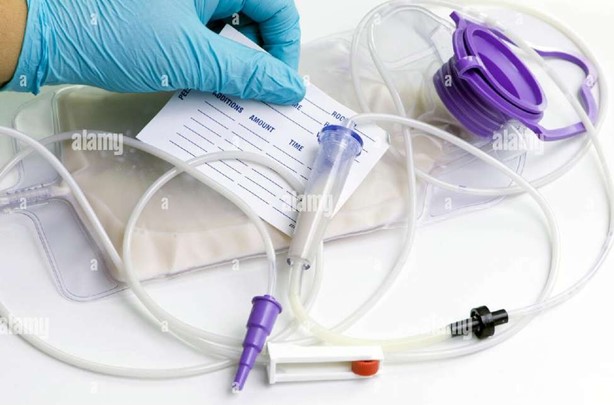A nurse is collecting data from a client who has osteoarthritis and reports pain and limited mobility in both knees.
Which of the following recommendations should the nurse make?
Use a recliner when sitting for long periods.
Apply moist heat to the knees.
Sleep on a soft mattress.
Place large pillows under the knees when lying in bed.
Place large pillows under the knees when lying in bed.
The Correct Answer is B
Moist heat can help reduce pain and stiffness in the joints by increasing blood flow and relaxing the muscles. Moist heat can be applied using warm compresses, heating pads, or warm baths.
Choice A is wrong because using a recliner when sitting for long periods can increase pressure on the knees and decrease circulation. A better option is to use a straight-backed chair with a footstool.
Choice C is wrong because sleeping on a soft mattress can cause poor alignment of the spine and joints, which can worsen pain and mobility. A firm mattress is recommended for clients with osteoarthritis.
Choice D is wrong because placing large pillows under the knees when lying in bed can limit the range of motion of the knees and cause contractures. A small pillow under the knees can provide some support and comfort, but it should not be too large or too high.
Nursing Test Bank
Naxlex Comprehensive Predictor Exams
Related Questions
Correct Answer is D
Explanation

This action indicates that the charge nurse should intervene because adding food coloring to the tube feeding is not recommended and can cause adverse effects such as aspiration, diarrhea, and allergic reactions.
Choice A is wrong because checking the volume of the aspirate is a correct action to assess gastric residual volume and prevent complications such as nausea, vomiting, and aspiration.
Choice B is wrong because checking the pH of the aspirate is a correct action to verify the placement of the NG tube and prevent accidental administration of enteral feeding into the lungs.
Choice C is wrong because administering 15 mL of water before administering the feeding is a correct action to flush the NG tube and prevent clogging.
Normal ranges for gastric residual volume are less than 250 mL for adults and less than 5 mL/kg for children. Normal ranges for pH of gastric aspirate are less than 5.5 for adults and less than 4 for children.
Correct Answer is D
Explanation
The nurse should offer the client a milkshake because it is a high-calorie, high- protein, and easy-to-consume food that can meet the nutritional needs of a client who is in the manic phase of bipolar disorder. Clients who are manic often have increased activity, decreased appetite, and poor attention span, which can lead to weight loss and malnutrition.
Choice A is wrong because Creamed corn is wrong because it is a low-protein, high-carbohydrate food that can increase blood glucose levels and cause mood swings.
Choice B is wrong because Mashed potatoes is wrong because it is a low-protein, high-starch food that can also affect blood glucose levels and mood stability.
Choice C is wrong because Spaghetti with meat sauce is wrong because it is a complex food that requires utensils and attention to eat, which can be difficult for a client who is manic and distractible.
Normal ranges for potassium are 3.5 to 5.0 mEq/L.
Whether you are a student looking to ace your exams or a practicing nurse seeking to enhance your expertise , our nursing education contents will empower you with the confidence and competence to make a difference in the lives of patients and become a respected leader in the healthcare field.
Visit Naxlex, invest in your future and unlock endless possibilities with our unparalleled nursing education contents today
Report Wrong Answer on the Current Question
Do you disagree with the answer? If yes, what is your expected answer? Explain.
Kindly be descriptive with the issue you are facing.
